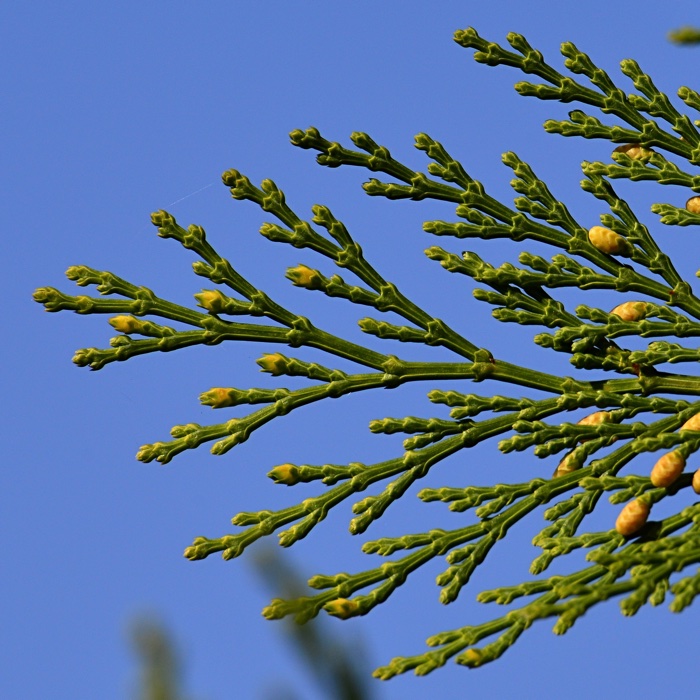Botanical collection

California Cedar, Librocedrus
Common name: California Cedar, Librocedrus
Latin name: Calocedrus decurrens o Libocedrus decurrens
Family: Cupressaceae
Origin: Northern America
Featrures:
The term of this genus, Libocedrus, has an uncertain etymology: according to some authors it is composed from the Greek Libanos, ‘incense’ and tree Kedros, ‘cedar’. Others believe is derived from another Greek term libos, ‘tear’, with reference to the resin that oozes from the trunk.
Large evergreen conifer up to 60 meters high, very narrow and slender, widespread in Europe since 1850 for ornamental purposes because of its aesthetic effect, remarkable rusticity and drought resistance, which makes it suitable for areas with hot and dry climates. However, the Libocedron prefers fertile, humid but well-drained soils, in sunny locations sheltered from cold winter winds.
The root system reaches a decent depth and has a wide lateral extension. The trunk is massive, conical at the base, with brown-orange bark and with well evident large roots that can reach 3 metres in diameter in the origin zones.
Nei rami giovani la corteccia tende a sfogliarsi in placche longitudinali, mentre nel tronco è suddivisa in grosse placche grigiastre, suberose che lasciano intravedere una colorazione rossastra.
In the young branches, the bark tends to leaf in longitudinal plates, whilst in the trunk it is subdivided in big greyish plates, suberose, which allow a glimpse of a reddish colouration.
The leaves are scaly, green and tightly attached to the branch. In the areas of origin this tree has an important commercial value because its wood, soft, aromatic and easily workable, is one of the most used for the production of drawing pencils and wooden elements for outdoor use.
Curiosity: the branches give off an aromatic scent when rubbed.
Botanical information powered by AG&P
See on the map


